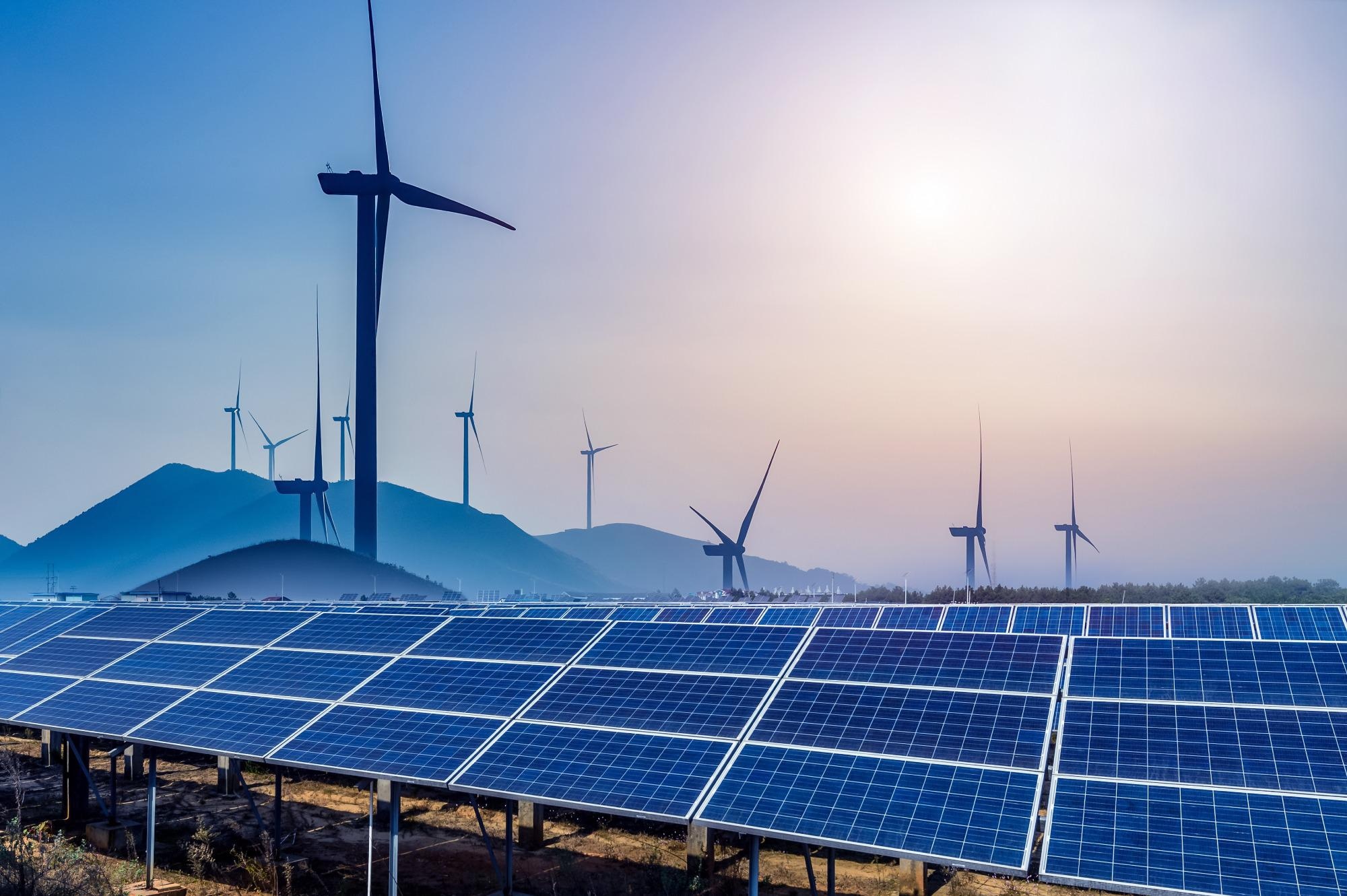
Image Credit: Shutterstock.com / hrui
Electricity produced by green sources increased in the U.S. during 2020, but fossil fuels still dominate the energy market.
The United States set a record for renewable power consumption during 2020, a new analysis of data released by the Energy Information Administration (EIA) reveals¹.
The report compiled by the SUN DAY Campaign — a non-profit research and educational organization that promotes sustainable energy technologies — says that the U.S. reliance on energy generated by solar and wind sources grew by 16.7% compared to results collected in 2019.
The analysis also revealed another positive statistic for green energy in the U.S., power generated by renewable sources provided more than a fifth of the nation's electricity.
These renewable electricity sources include familiar technology like wind farms, hydropower, and solar panels, as well as more obscure methods of generating green energy like geothermal power and biomass generation — the burning agricultural waste to heat water and produce steam that turns turbines.
There is still work to be done, however, if the U.S. is to hit carbon emission targets set by the Paris Agreement after the new President, Joe Biden reinstated the country in the pact just six hours into his first term in the White House.
A Bright Outlook For U.S. Renewable Energy
The SUN DAY Campaign's figures paint an interesting picture of how sustainable energy is faring in the energy market against fossil fuel burning alternatives².
Electricity generated by renewable sources has now passed the contribution made by the burning of coal and nuclear power production, which stand at around 19.1% and 19.5%, respectively³.
Electricity generated by sources like solar and wind still lag behind the burning of natural gases — which holds the largest market share and accounts for almost double the contribution of all renewable sources united. But, there could be signs of a shift in this dominance, the use of electricity generated by renewable sources increased by 67,365 GWh in 2020, whilst electricity generated by burning natural gases only increased by around 31 k GWh.
Whilst electricity produced by natural gas burning increased by 2.0% in 2020 as a whole, it actually dropped by an average of around 7% in December and November in comparison to the last two months of 2019⁴.
The EIA forecasts for 2021 and 2022 also presented some positive points.
The organization suggests that consumption of electricity in the U.S. will increase by 1.7% during this year mainly due to a cold start to the year and the fact that as a result of the ongoing COVID-19 crisis, many more people are working from home.
Yet, despite this increase in consumption, the EIA expects that the proportion of electricity generated by natural gas should fall from 40% in 2020 to 37%. They also predict that this will drop to 35% by 2022. The share of electricity generated by nuclear power plants will also exhibit this downward trend, albeit to a lesser extent, dropping from 21% to 20% and 19% in 2021 and 2022 respectively.
Of course, this drop in production from these sources will have to be countered by an increase in supply from renewable sources. The EIA forecast that this will rise from 20% in 2020, to 21% in 2021 and 22% in 2022.
There's Still Work to be Done
Despite these positive shifts towards renewable energy and away from fossil fuels, the U.S. may have a way to go before it meets Paris Agreement 2050 targets. And a move to renewable sources of electricity alone might not achieve this.
A study recently published in the journal Proceedings of the National Academy of Sciences of the United States of America (PNAS)⁵ detailed the most comprehensive study of greenhouse gases emitted by residential energy use in the U.S.
The authors from the School for Environment and Sustainability at the University of Michigan concluded that decarbonizing electricity production and moving to sustainable sources was not enough in isolation, to hit carbon targets. They suggest other measures such as the reduction in household floor space may also be required.
Yet, with this positive upswing in the reliance on green energy and a new administration that has already launched a flurry of incentives to prioritize the county's role in the climate change battle, things are looking bright for sustainable energy in the United States.
References
1. Short-Term Energy Output, EIA: Analysis & Projection, [2021], [https://www.eia.gov/outlooks/steo/report/electricity.php]
2. Total Electric Power Industry Summary Statistics, 2020 and 2019, EIA: Electric Power Monthly, [2021], [https://www.eia.gov/electricity/monthly/epm_table_grapher.php?t=table_es1a]
3. Total Electric Power Industry Summary Statistics, Year-to-Date 2020 and 2019, EIA: Electric Power Monthly, [2021], [https://www.eia.gov/electricity/monthly/epm_table_grapher.php?t=table_es1b]
4. Net Generation by Energy Source: Total (All Sectors), 2010-December 2020, EIA: Electric Power Monthly, [2021], [https://www.eia.gov/electricity/monthly/epm_table_grapher.php?t=table_1_01]
5. Goldstein. B., Gounardis. D., Newell. J.P., [2020], 'The carbon footprint of household energy use in the United States,' PNAS, [https://doi.org/10.1073/pnas.1922205117]
Disclaimer: The views expressed here are those of the author expressed in their private capacity and do not necessarily represent the views of AZoM.com Limited T/A AZoNetwork the owner and operator of this website. This disclaimer forms part of the Terms and conditions of use of this website.